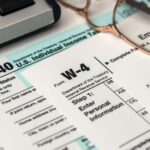Content

As https://mybackgroundhistory.com/10-headlines-in-nederlands-3/ highlighted in the diagram below, money often flows from one sector to another, awarding benefits along the way. No single sector should hoard or collect all resources; instead, a fully-functioning circular model will continuously move funds so each sector can operate appropriately. Note that this example below is a single type of model and does not represent all circular flow models. Apart from providing information on national income, the circular flow of income can be used to gauge the interdependence among the various sectors. It shows that the sectors are interdependent on one another and one cannot exist without the existence of the other.
The The Circular Flow of Income and Expenditure model illustrates how in an economy income must equal production. In other words, one person’s expenditure is another entity’s income. George’s wages are income to George, but an expenditure to Ben. Ben also purchases parts from a local auto parts store. His purchase is an expense to Ben, but income to the auto parts store. Fortunately, some of Sandra’s payment is left over as income to Ben.
Business Studies
The three major https://personal-accounting.org/s in the economy are goods, money, and services. As such, the role of government cannot be ignored in any economy because of such a huge control it possesses over the economic cycle. Consequently, governmental interference affects the overall economic performance of a country. Some of these drawbacks are rectified in the three-sector model. The households utilize wages and rent to purchase certain goods and services to fulfill their needs and wants. Firms are the producers of goods and services, and therefore, they require various production or societal resources to produce goods and services.

In the product method, the final money value of all products prepared in the country in a year is used to calculate the national income of the country. The notable point here is that the final goods should be the ones that are consumed directly and not used to produce any new product. In other words, the final products must be used for consumption and not for production as raw materials. Exports and foreign investment are the sources of injecting income in the circular flow of income and expenditure. The capital market lends money to the firms or government sector for increasing their resources. They pay taxes to the government and also it is one of the factors of leakage from the circular flow. Because of these reasons circular flow of income in two-sector economy is a closed economy.
Circular flow of income
This is a leakage because the saved money can not be spent in the economy and thus is an idle asset that means not all output will be purchased. The injection that the financial sector provides into the economy is investment into the business/firms sector. An example of a group in the finance sector includes banks such as Westpac or financial institutions such as Suncorp. These models are a three-sector model of economy and a four-sector model of the economy.
- Each sector has a dual function in the circular flow of income and expenditure, as each sector has to make payments to some sectors and to receive payments from some sectors.
- This is the essence of the circular flow of income in a two-sector economy where there is no governmental activity and the economy is a closed one.
- This tends to reduce employment, income and prices, thereby leading to a deflationary process in the economy.
- The formula to compute the spending multiplier is _____.
